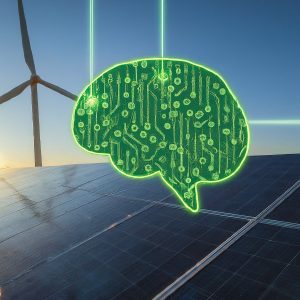Introduction: AI’s Growing Appetite
Artificial intelligence (AI) is reshaping our world, promising innovation and efficiency across various sectors. However, its rapid evolution comes with a significant challenge: the escalating demand for computing power, posing a threat to global electricity resources. In this article, we delve into the implications of AI’s hunger for power and explore potential solutions to ensure a sustainable future.
AI’s Insatiable Hunger: Numbers Speak Louder
Industry leaders have sounded alarms about AI’s escalating energy consumption. Rene Haas, CEO of Arm Holdings, forecasts that data centers’ electricity consumption could surpass that of India by 2030, a staggering statistic given India’s vast population. Additionally, Exelon CEO warns of a potential 900% increase in AI-driven power demand in Chicago by the same year . Fortune Magazine echoes these concerns, suggesting that AI could consume a quarter of the United States’ electricity by 2030 if left unchecked.
Understanding AI’s Energy Appetite
The voracious energy appetite of AI stems from its reliance on complex algorithms, requiring substantial computational resources. Training these algorithms involves processing vast datasets, a process that demands significant energy inputs from data centers. As AI applications advance, so does their energy footprint, intensifying the strain on global power grids.
Beyond the Headlines: Implications of Unchecked Energy Consumption
The ramifications of unchecked AI energy consumption extend beyond data centers. A stressed power grid could lead to potential blackouts, impacting not only AI progress but also essential services, businesses, and critical infrastructure. This scenario threatens economic stability and disrupts daily life routines.
Seeking Sustainable Solutions %22%20transform%3D%22translate(.6%20.6)%20scale(1.17188)%22%20fill-opacity%3D%22.5%22%3E%3Cellipse%20fill%3D%22%230e0000%22%20cx%3D%22181%22%20cy%3D%22255%22%20rx%3D%22110%22%20ry%3D%22110%22%2F%3E%3Cellipse%20fill%3D%22%239bc7d1%22%20rx%3D%221%22%20ry%3D%221%22%20transform%3D%22matrix(66.47777%20-137.1371%2060.40637%2029.28224%2045.7%2063)%22%2F%3E%3Cellipse%20fill%3D%22%23338ab0%22%20rx%3D%221%22%20ry%3D%221%22%20transform%3D%22rotate(103.2%2057.7%2061.1)%20scale(60.68805%20248.89084)%22%2F%3E%3C%2Fg%3E%3C%2Fsvg%3E)
Despite these challenges, there is optimism about steering AI towards a sustainable path. Promising initiatives and strategies include:
Energy-Efficient Chip Design
Companies like Arm are spearheading the development of energy-efficient chips tailored for AI applications. These chips prioritize performance while minimizing energy consumption, offering a path towards sustainable computing.
Renewable Energy Integration
Data centers are increasingly adopting renewable energy sources such as solar and wind power. This shift reduces reliance on fossil fuels, mitigating environmental impact and promoting sustainability in AI operations.
Algorithmic Optimization
Researchers are actively working on more efficient algorithms that achieve comparable results with reduced computational power. This optimization not only conserves energy but also enhances AI’s overall efficiency.
Collaboration for a Sustainable Future
Addressing the AI energy challenge necessitates collaborative efforts across various stakeholders:
Government Incentives
Governments can incentivize research and development in energy-efficient AI technologies. Additionally, promoting the adoption of renewable energy sources for data centers through policies can drive sustainability efforts.
Industry Standards
Establishing industry-wide standards for energy-efficient AI hardware and software encourages innovation towards lower power consumption. Standardization also fosters competition in sustainable technology development.
Consumer Awareness
Educating consumers about AI’s environmental impact empowers them to make sustainable choices. Awareness campaigns highlighting services prioritizing energy efficiency can drive demand for eco-friendly AI solutions.
Conclusion: Paving the Way for Sustainable AI
AI’s potential to transform industries is undeniable, but its energy demands pose significant challenges. By prioritizing energy efficiency, embracing renewable energy sources, and fostering collaboration, we can pave the way for a sustainable AI future. Now is the time for concerted efforts to ensure AI thrives without compromising our planet’s resources.
Read More: Alitech Blogs
References: Google News













